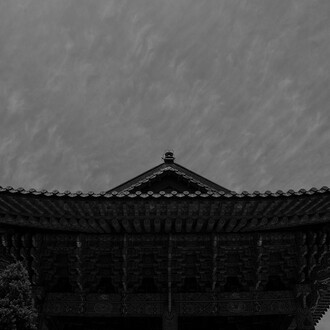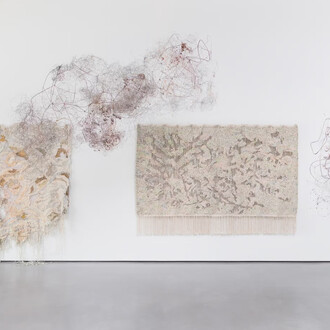“No great mind has ever existed without a touch of madness,” so Aristotle tells us. A quick glance over Goya’s oeuvre is enough to recognise art both great and, by some definition, mad. Goya is famously often considered the first modern artist, for his concentration on depicting his own, inner thoughts and responses to the world he saw around him, rather than reflecting those of others or attempting to produce an ‘objective’ representation. What he saw, both in his private life and in the events occupying Spain, was often-incomprehensible turmoil. It is unsurprising, therefore, that this is dramatically reflected in his astonishing works.
Amongst Goya’s prolific output of some 700 paintings, 900 drawings and 300 prints we find madness appearing again and again. Incarcerated lunatics roam an asylum yard and play fancy-dress in their cell, cannibals gnaw on their victims, men carry donkeys on their backs and monsters loom over humans. Goya’s fascination with madness endured to the final years of his life, when he completed a series of drawings of lunatics during his exile in Bordeaux, in 1824-1828. As these works attest, ‘madness’ is not only highly subjective but also arrives in an array of disguises. The titles of many of his works reference a loco or locura which, just as the English terms ‘madman’ or ‘madness’, can equally well refer to someone who is clinically insane or to someone who is just acting the fool, pushing the boundaries of ‘normal’ behaviour.
At the age of forty-six, Goya endured a near-fatal illness that left him utterly deaf for the rest of his life. The Romantic representation of Goya has long held up this one event as the moment at which the artist’s work changed spectacularly and permanently. We are told of the boy from the provinces, whose talent and determination propelled him to become court painter, before his illness left him not only deaf but also suffering from bouts of deep depression and anxiety. For many, this simplistic account satisfactorily explains the depictions of insanity which are a prominent feature of Goya’s work after this date.
Yes, his deafness surely affected his art. But if we’re going to play that game, then surely so too we must evoke the turmoil of war into which Spain was thrown, thrusting its reigning court painter from royal comfort into the battle-torn Spanish countryside. The period through which Goya lived was one of political and social upheaval, witness to indescribable horrors which knocked careful, optimistic, enlightened thought clean off its feet.
This neat division of Goya’s work also fails to appreciate the interest in these themes that the artist showed long before his own personal taste of insanity, of feeling “so bad that I don’t know if my head is on my shoulders… I don’t know what is happening.” Although he briefly dabbled in history painting at the start of his career, and produced a string of the official portraits required from the First Court Painter, it is clear that these were not the subjects that enthralled Goya. What he was interested in was human experience and what happens when we are pushed to our limits and face events we cannot rationalise. These themes appeared long before his illness in the winter of 1792-1793, in the shrewd social observations of his tapestry cartoons and in the monstrous demons huddled in St Francis Borgia at the Deathbed of an Impenitent of 1788.
The famous plate from Goya’s series Los Caprichos whose caption warns us that The Sleep of Reason Produces Monsters bears witness to his interest in the fluid distinctions between lunacy and sanity. Just as the inmates in his Yard with Lunatics seem to stare out at the viewer, drawing them into their world, here too Goya reminds us that no one is ‘safe’ from madness. Only by upholding reason can we fend off monstrous actions.
Fifteen years later, however, Goya abandoned any attempt at moralising or rationalisation. One look at the etchings he made during the Peninsular War is enough to understand why. Faced with scenes of such barbarism, rationalising seems entirely futile. Predating photojournalism by centuries, in these personal works which went unpublished until thirty years after Goya’s death, the artist portrays with equal attention the atrocities committed by the French troops and those of the Spanish guerrilla fighters. This is no attempt at patriotic propaganda, but a bitter record of the things of which humans are capable.
Alongside the drawings that Goya produced throughout his life, these raw, monochrome prints are where we find Goya’s most vivid, frightening and touching renditions of madness. The skilled draughtsmanship which so powerfully translates human emotion is the focus of the internationally touring exhibition, Renaissance to Goya: prints and drawings from Spain, which will be opening for its only American appearance, in New Mexico, at the end of the year. Placing the works in a scientific, social and artistic context, the exhibition aims to shine a light on the creative process behind Goya’s work.
The Pinacothèque de Paris is also dedicating a new exhibition to Goya over the coming months, considering him as a unique witness to the Spain of his time. Goya and Modernity pays homage to the artist whose desire to condemn the horrors he observed is reflected in the violence of his art.
In an address at the San Fernando Academy of Fine Arts, Goya emphasised the importance of allowing art students to follow their imaginations. This is certainly what he did throughout his life, finding the courage to do so knowing that though the imagination creates genius, so too is it the root of insanity. For Goya, giving free reign to his imagination was the only way to explore his persistent fascination in humankind and to express his sympathy for those he saw as dehumanised. Perhaps they were mad, perhaps he was mad, perhaps the world was mad, but the monsters roamed and Goya wanted only to open our eyes.
Author: Gillian Achurch















